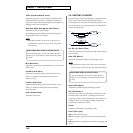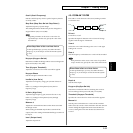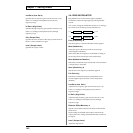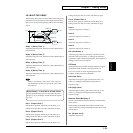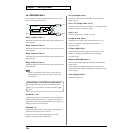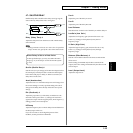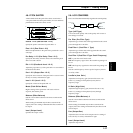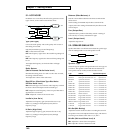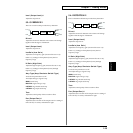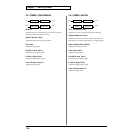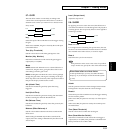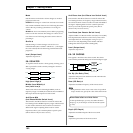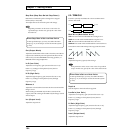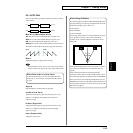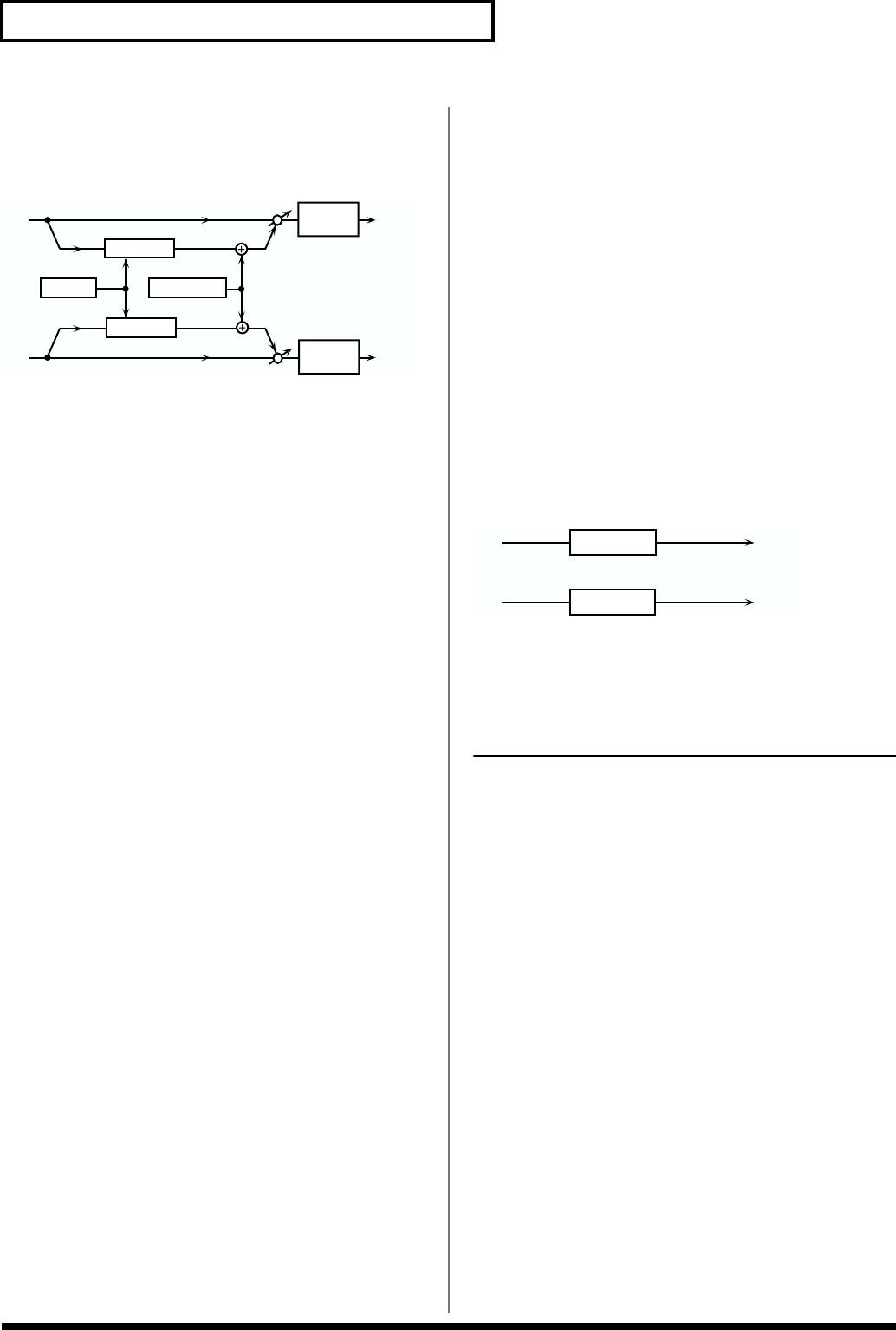
148
Chapter 7. Adding Effects
51: LOFI NOISE
In addition to a Lo-Fi effect, this effect also generates various
types of noise, such as radio noise and disc noise.
fig.MFX-51
Type (LoFi Type)
Lowers the audio quality. The audio quality will worsen as
this setting is increased.
Post Fltr (Post Filter Type/Cutoff Frequency)
OFF: A filter will not be used.
LPF: The frequency region above the Cutoff Freq setting will
be cut.
HPF: The frequency region below the Cutoff Freq setting will
be cut.
And adjust the frequency at which the filter will begin
cutting.
Radio Detune
(Radio Detune#/Radio Noise Level)
Simulates the tuning noise of a radio. As this value is raised,
the tuning will drift further.
And adjust the volume of the radio noise.
Disc:LPF:Lev (Disc Noise Type:Disc Noise
LPF:Disc Noise Level)
Disc: Selects the type of record noise. The frequency at which
the noise is heard will depend on the selected type.
LPF: Adjust the cutoff frequency of the low pass filter that is
applied to the record noise.
Level: Adjust the volume of the record noise.
LowGain (Low Gain)
Adjust the low frequency gain (amount of boost or cut).
Positive (+) settings will emphasize (boost) the low
frequency range.
Hi Gain (High Gain)
Adjust the high frequency gain (amount of boost or cut).
Positive (+) settings will emphasize (boost) the high
frequency range.
Balance (Effect Balance) #
Sets the volume balance between the direct sound and the
effect sound.
With a setting of D100:0W only the direct sound will be
output, and with a setting of D0:100W only the effect sound
will be output.
Pan (Output Pan)
Adjust the stereo position of the delay sound. A setting of
L64 is far left, 0 is center, and 63R is far right.
Level (Output Level)
Adjust the output level.
52: SPEAKER SIMULATOR
Speaker Simulator is an effect that simulates the speaker type
and mic settings used to record the speaker sound.
fig.MFX-52
Speaker Type
Select the type of speaker. The specifications of each type are
as follows. The speaker column indicates the diameter of
each speaker unit (in inches) and the number of units.
Type Cabinet Speaker Microphone
SMALL 1 small open-back enclosure 10 dynamic mic
SMALL 2 small open-back enclosure 10 dynamic mic
MIDDLE open back enclosure 12 x 1 dynamic mic
JC-120 open back enclosure 12 x 2 dynamic mic
BUILT IN 1 open back enclosure 12 x 2 dynamic mic
BUILT IN 2 open back enclosure 12 x 2 condenser mic
BUILT IN 3 open back enclosure 12 x 2 condenser mic
BUILT IN 4 open back enclosure 12 x 2 condenser mic
BUILT IN 5 open back enclosure 12 x 2 condenser mic
BG STACK 1 sealed enclosure 12 x 4 condenser mic
BG STACK 2 large sealed enclosure 12 x 4 condenser mic
MS STACK 1 large sealed enclosure 12 x 4 condenser mic
MS STACK 2 large sealed enclosure 12 x 4 condenser mic
METAL STACK large double stack 12 x 4 condenser mic
2-STACK large sealed enclosure 12 x 4 condenser mic
3-STACK large sealed enclosure 12 x 4 condenser mic
Mic Set (Mic Setting)
Adjust the location of the mic that is recording the sound of
the speaker. This can be adjusted in three steps, with the mic
becoming more distant in the order of 1, 2, and 3.
Mic:Dir (Mic Level:Direct Level) #
Mic: Adjust the volume of the microphone.
Dir: Adjust the volume of the direct sound.
R in
R out
L in
L out
Lo-Fi
Lo-Fi
2-Band
EQ
2-Band
EQ
Noise Gen.
Radio
L in
R in
L out
R out
Speaker
Speaker



